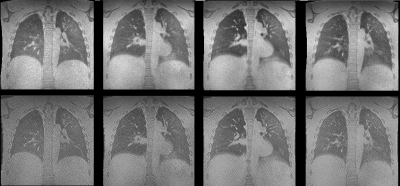Dorottya Papp1, Jose M. Castillo T.1, Piotr A. Wielopolski1, Pierluigi Ciet1, Gyula Kotek1, Jifke F Veenland1, and Juan Antonio Hernandez-Tamames2
1Radiology and Nuclear Medicine, Erasmus Medical Center, Rotterdam, Netherlands, 2Erasmus Medical Center, Rotterdam, Netherlands
1Radiology and Nuclear Medicine, Erasmus Medical Center, Rotterdam, Netherlands, 2Erasmus Medical Center, Rotterdam, Netherlands
FCNNs have been widely used in radiology, they have not been extended for improving free-breathing lung MRI yet. Our aim is to improve image quality of 4D-ZTE in free-breathing using FCNN. When tested on unseen data the predicted images had improved visual image quality and artifacts were reduced

